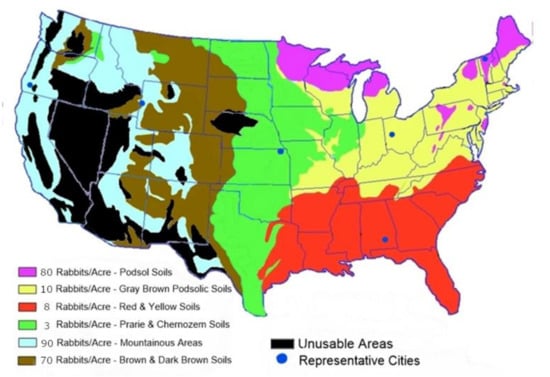Abstract To safeguard against meat supply shortages during pandemics or other catastrophes, this study analyzed the potential to provide the average household’s entire protein consumption using either soybean production or distributed meat production at the household level in the U.S. with: (1) pasture-fed rabbits, (2) pellet and hay-fed rabbits, or (3) pellet-fed chickens. Only using the average backyard resources, soybean cultivation can provide 80–160% of household protein and 0–50% of a household’s protein needs can be provided by pasture-fed rabbits using only the yard grass as feed. If external supplementation of feed is available, raising 52 chickens while also harvesting the concomitant eggs or alternately 107 grain-fed rabbits can meet 100% of an average household’s protein requirements. These results show that resilience to future pandemics and challenges associated with growing meat demands can be incrementally addressed through backyard distributed protein production. Backyard production of chicken meat, eggs, and rabbit meat reduces the environmental costs of protein due to savings in production, transportation, and refrigeration of meat products and even more so with soybeans. Generally, distributed production of protein was found to be economically competitive with centralized production of meat if distributed labor costs were ignored.



Such as?